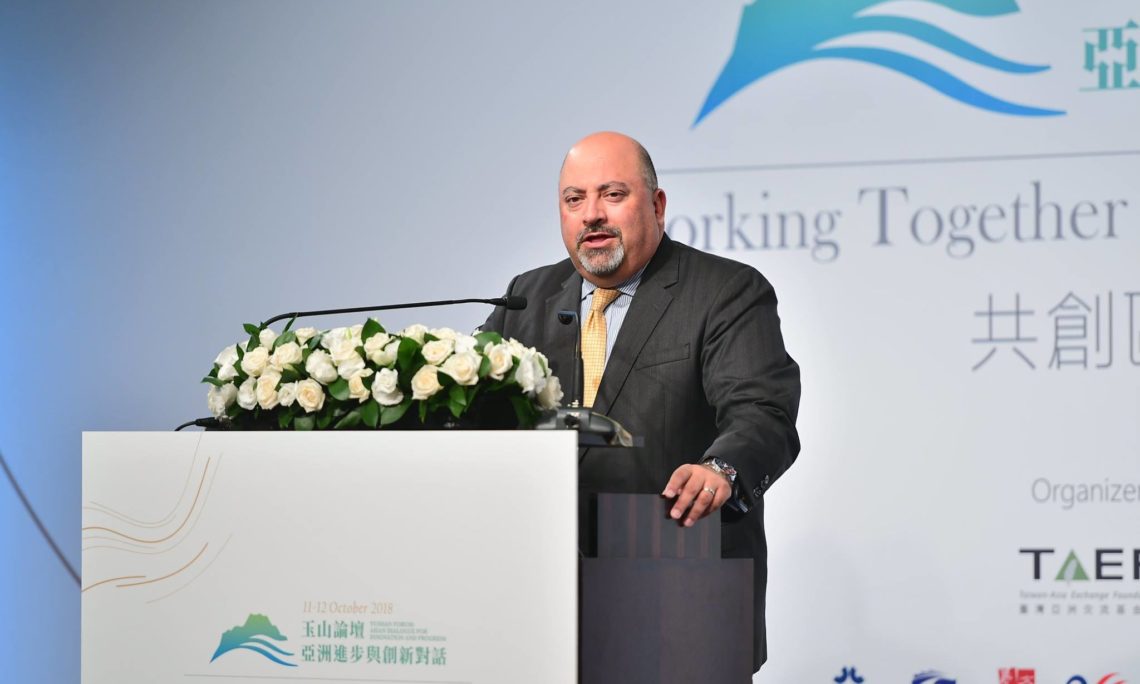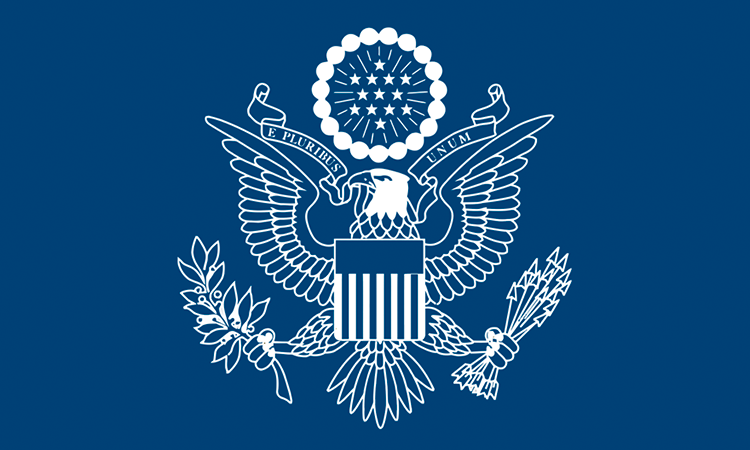2018年10月12日
AIT 正式資料編號: OT-1832
(致詞講稿)
“A Free and Open Indo-Pacific is Essential to the Future Prosperity of South Asia”
Excellencies, distinguished delegates, respected friends, it is indeed an honor for me to address this august gathering here in Taipei. I am grateful to the organizers of the Yushan Forum for giving me the opportunity to share with you some humble insights from my studies of South Asia and its role in world affairs, and the importance of countries of South Asia further integrating themselves with the other countries of the Indo-Pacific and the world based on standards and a rules based order.
I do not need to remind any of you that the Indian Subcontinent is astoundingly diverse and vast, a region home to fully one fifth of humanity. Yet across this vibrant tapestry of languages, cultures and faiths, the passion of cricket is understood by all. From the deserts of Herat and Kandahar to the port cities of Karachi and Chittagong, to the mountainous terrain of Ladakh and Kathmandu, through the heartland of the great civilization of India, and all the way to the beaches of Colombo and Maldives, people everywhere share a common love of a game that has been thoroughly adapted to suit local conditions and passions.
Throughout South Asia, however, there is an increasing recognition that the region must move beyond a shared affinity for cricket and Bollywood music in order to address the expectations of an informed and expectant electorate. As revolutions of technology and communications have transformed the lives of 1.7 billion South Asians, the rise in awareness has put increased pressure on governments and leaders to meet the demands of citizens who can communicate in ways their ancestors could only imagine. With satellite TV beaming into every hamlet, people at every station of life are more aware than ever of the compelling need to catch up to standards of living in other parts of the world.
In truth, South Asia’s economies have come a long way in a very short period of time. I have lived long enough to remember when making a phone call in India of the 1970s required resourcefulness, patience, cash, and prayer. I also remember when TV first came to village India, and its transformation of the national psyche.
These changes have happened so rapidly that India is now the top G20 country when it comes to accessing the internet via mobile phone. 79 percent of all cell phone users get online from their smart phones instead of a desktop computer. The world of Marshall McLuhan’s fabled global village is at India’s fingertips. The growth in aviation in India, particularly, makes it almost stretch credulity to remember an era just 40 years ago when there were only five flights a week between Delhi and Bangalore. Today, Indira Gandhi International Airport in Delhi is breaking through the 60 million passenger barrier with double digit growth that will very soon make it one of the busiest international airports on earth.
And this transformation has not just happened in India. In Bangladesh, millions of women are employed in the garment sector, and Bangladesh has consistently achieved six percent annual GDP growth for two decades, lifting millions of people out of the most desperate poverty. Working with USAID, Bangladesh has developed strategies to make the country self-sufficient in rice production, and highly prepared for natural disasters such as cyclones. When Cyclone Roanu made landfall in Chittagong in 2016, only 24 people lost their lives versus thousands, all thanks to a network of shelters and a thorough campaign of education and preparedness for people in low-lying areas.
In parts of Sri Lanka, standards of development are attaining South-East Asian levels enjoyed by countries like Thailand. Nepal has signed a Millennium Challenge Corporation compact outlining a program to build impressive new energy and grid transmission infrastructure that will help fuel economic growth. In cities like Hyderabad, India is building communities of the future that can cater to the work and lifestyle needs of millions of highly skilled workers in the computer science, business consulting, bio-technology, and research fields.
First, I would be remiss if I did not offer some insights gleaned from my service in South Asia as an Ambassador, my service at the American Embassy in New Delhi, and my assignments in Washington focused on the region. It will come as no surprise to you if I stress that the people of South Asia are fiercely dedicated to democracy and pluralism. Every time India votes in national polls, hundreds of millions of people participate in the single greatest manifestation of electoral democracy ever seen by the human species.
Whether in Bhutan, Sri Lanka or Nepal, the people of this region are consistently and passionately committed to exercising their rights as free citizens of democratic states. Most recently, voters in Maldives cast their votes to reassert their passionate adherence to democracy and rule of law. Friends, we live in an era where every citizen of every country in South Asia has tasted what it means to have a vote that matters, and every citizen of this massive region knows what the people on Taiwan also know: rule of the people, by the people, and for the people, is the greatest guarantor of peace, security, prosperity, and freedom.
Further, the people of South Asia are robustly engaged in pluralistic civil discourse through all forms of print, broadcast, and social media. In Sri Lanka, in India, in Bangladesh, hundreds of millions of citizens participate in free and open debates in on-line forums, discussing matters of importance. While these forums face the same challenges being discussed in social media in the United States, it is clear that citizens have readily taken up the tools of communication offered by Facebook and Twitter and similar online services to express themselves and shape their national narratives. This is true in India, in Maldives, indeed, all across the region, resulting in unprecedented levels of transparency, awareness, and accountability.
Next, it is important to note the demands South Asian electorates are placing on their leaders. The era of politicians canvassing for votes then ignoring electorates until the next election is over. Voters now demand roads, electricity, jobs, clean water, sanitation, healthcare, and law and order. They hold politicians to account, and they use instruments such as the “Right to Information” laws of India and Sri Lanka to empower themselves as vigilant watchdogs over the work of government. Compared to just a few decades ago, the combination of cellphone, internet, satellite TV, social media, and empowering citizen-friendly legislation and courts have given average people much more power and influence than ever before. As a result, bureaucrats and politicians have to pay attention to results in order to meet the demands of voters whose education levels just keep rising.
So what pressure is this bringing to bear? To cite just one area, there is a growing awareness of the need for enhanced connectivity as a means of facilitating trade and economic growth. India and Bangladesh have made great strides to enhance their trade ties and infrastructure links. So have Nepal and India. India has embarked upon an ambitious campaign to connect its North Eastern states by road and rail with Myanmar and Thailand, to link the economies South Asia and Southeast Asia. Sri Lanka and Bangladesh are investing in expanding their maritime connectivity, including the facilities at the ports of Colombo and Chittagong. India is building several new ports along both coastlines. The United States Government is bringing together trade and customs officials throughout the region to learn about best practices for trade facilitation and efficiency, and has also invited counterparts from South East Asia as well, so as to foster greater Indo-Pacific connectivity.
Why is this so important? Sitting here in Taipei, in a highly developed and advanced APEC economy, it is a no-brainer to assert that innovation thrives in a culture of high trust and clear and fair rules. Taiwan, Korea, and Japan built prosperous economies based on the standards and values of the global operating system for trade and security that triggered so much economic growth and recovery after World War II. Developing interlocking security and economic agreements and understandings that minimized the risk of tensions, these economies and others in Asia prospered mightily by creating avenues for arbitration of disputes, and guaranteed free and open trade and access to the sea and airways that connected nations across the region.
In South Asia, however, these understandings have developed more slowly. The era of import substitution and state administration of industries has now largely come to an end. The roaring Indian economy has shrugged off the cobwebs of the past and become the most dynamic large economy on earth, with world class businesses and innovation. As India grows, its bureaucrats and politicians recognize that a more integrated Subcontinent is good for all the people of South Asia, raising standards of living through enhanced trade and economic growth.
A transformation has now begun in South Asia that East Asians witnessed several decades ago. Thanks to air connections, it is now feasible to make same-day business trips in and between India, Nepal, Bangladesh, and Sri Lanka. This has been true in East Asia for so long, but it is a very recent achievement in South Asia. Visas are becoming much easier to obtain, with many executives able to avail themselves of visa-on-arrival in several but not all South Asian countries. However, protection of local companies and champions remains a large obstacle to sustained economic integration. And throughout the region, corruption remains a major impediment to high quality foreign direct investment.
Some might see opportunity in exploiting the vulnerabilities of low-trust economic ecosystems by extending loans of dubious value laced with unsavory inducements. Such efforts, no matter how grand and ambitious, will ultimately fail to achieve meaningful development. Voters are too informed, too empowered, and too aware of the long-term implications for their sovereignty, security, and prosperity to tolerate such “debt trap” lending for white elephant infrastructure of uncertain economic value. Nor do they fail to notice the risks of being caught up in tactics that would turn heretofore peaceful areas into zones of confrontation or even conflict.
In truth, the inexorable movement in South Asia is toward developing the kind of high trust ecosystem that has made America the incubator of innovative “new economy” companies like Amazon, Microsoft, Tesla, Facebook, and Apple. While this will certainly take far more effort and time, India is already home to highly complex global firms that compete on par with the competition in America and Europe. There are highly competent Sri Lankan firms investing in manufacturing in the United States, adding their efforts to the already large investments by Indian companies in America. There are companies in India that help run the sophisticated business algorithms of some of the most technology intensive companies in the United States, and their executives know that the only way they can retain such business is to sustain high-trust standards of managerial and professional ethics, transparency, data integrity, and workforce empowerment.
This is not to say South Asia is only finding its way in services. Bangladesh is a world leader in textile production, and American firms are helping its factories protect workers’ rights, boost factory safety, and ensure a supply chain that gives reassurance to consumers. India’s aerospace industry is growing rapidly as private sector firms develop supply chains to feed into the American aerospace market. In Sri Lanka, American companies have invested in R&D and design to take advantage of its mastery of high-end, high-tech textiles.
Friends, it is my fervent hope that these trends continue to expand rapidly. South Asian nations have shown that it is not just their companies that are trending toward developing high-trust ecosystems. Nations have also shown the responsible path forward toward fostering a climate of mutually reinforcing trust and confidence. When faced with overlapping maritime boundary claims, India, Bangladesh, and Myanmar submitted to binding arbitration. When the ruling came down, all three nations agreed to the terms of the decision, unlocking the ability by each to make long term plans, including energy exploration, fishing stock management, and much else. None of these countries has to confront the prospect of conflict over these claims because they relied upon the infrastructure of the global operating system, the agreements and understandings that have built up over decades to minimize the risk of conflict and boost cooperation. Such principled leadership is an example that merits emulation by others who face competing and overlapping claims of sovereignty.
As an American diplomat who has devoted much of his career to strengthening ties with South Asian states, I believe there is tremendous promise in that region. America’s bilateral relations with the entire region have expanded tremendously in the previous decade, and continue to grow rapidly. In addition to cooperation on the bilateral relations, student exchanges, academic collaboration and business partnerships have led to a vibrant U.S.-South Asian partnership and enriched the United States. This is a reflection of the increasing strategic and economic importance of the region, and its demographics. America will continue to serve as a principal supporter of the global operating system that has served us all well, and allowed many countries to prosper. We will expend sustained effort to ensure a free and open Indo-Pacific that allows all to prosper and thrive under a transparent set of rules and standards, including freedom of navigation and commerce and peaceful arbitration of disputes. Here, I want to quote Secretary of State Mike Pompeo, who said,
“When we say “free” Indo-Pacific, it means we all want all nations, every nation, to be able to protect their sovereignty from coercion by other countries. At the national level, “free” means good governance and the assurance that citizens can enjoy their fundamental rights and liberties.
When we say “open” in the Indo-Pacific, it means we want all nations to enjoy open access to seas and airways. We want the peaceful resolution of territorial and maritime disputes. This is key for international peace and for each country’s attainment of its own national aims.”
And America is putting real resources into supporting these principles. Congress just passed the BUILD Act, which will create a new U.S. government agency — the U.S. International Development Finance Corporation – which will expand America’s ability to help meet the needs of countries and citizens across the Indo-Pacific, including those of South Asia. And we will continue to serve as a strong guardian of the freedoms of navigation and overflight, for the benefit of all, even as we build even more robust ties with friendly nations throughout the region. In doing so, we will continue seventy years of constructive and consistent American post-war efforts to ensure a free and open Indo-Pacific.
To close, therefore, I wish to issue a charge and a challenge to all of us gathered here today. Let us not think of East Asia or South Asia. Let us instead think of a holistic Indo-Pacific region, woven together by millennia of interaction and shared experience, a region blessed by the waters of two oceans. Just as the countries of the East have taken full advantage of the benefits of the global operating system, they can and should help their neighbors in South Asia to attain the full benefit of that system. The genius of the shared security and economic architecture of the post-war era is that it was designed for mutual benefit. There is no zero-sum result that lies therein.
Ample opportunity exists for Taiwan-South Asian cooperation in the areas of entrepreneurship, public health and women’s empowerment. For example, Taiwan can collaborate with Bangladesh to expand into electronics manufacturing, or partner with Sri Lanka develop its Information Technology sector, or collaborate with India to develop high value/high trust supply chains. The U.S. can be a partner in these efforts through the Global Cooperation and Training Framework and there are no doubt many more avenues for mutually beneficial cooperation. Such efforts will forge additional Indo-Pacific linkages, boost prosperity and trade, enhance security, and help the aspirational people of South Asia taste even more of the prosperity of the modern world. For this vision to become a reality, it is absolutely vital and essential that all of us strive to ensure a Free and Open Indo-Pacific for the next 70 years and beyond.
Permit me again to quote Secretary of State Mike Pompeo, who said,
“The Trump administration has a clear vision for the Indo-Pacific in the 21st century. It is an American vision that is deeply engaged in the region’s economic, political, cultural, and security affairs. Like so many of our Asian allies and friends, our country fought for its own independence from an empire that expected deference. We thus have never and will never seek domination in the Indo-Pacific, and we will oppose any country that does.
Rather, we aspire to a regional order, independent nations that can defend their people and compete fairly in the international marketplace. We stand ready to enhance the security of our partners and to assist them in developing their economies and societies in ways that ensure human dignity. We will help them. We will help them keep their people free from coercion or great power domination.”
Thank you again for the opportunity to address this distinguished gathering.


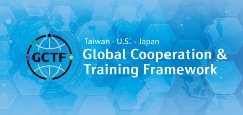




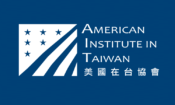
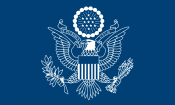
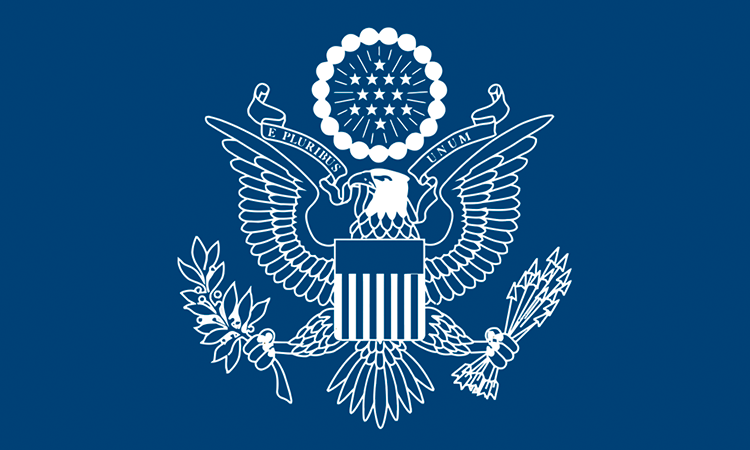





![Video Thumbnail [Recovered]-01](../../wp-content/uploads/sites/269/Video-Thumbnail-Recovered-01-750x450.jpg)



